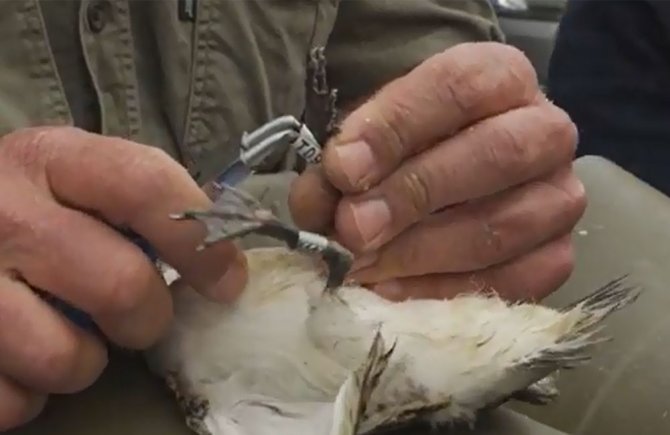
Following Sandwich Terns through colour rings and GPS
Over the past 10 years, Sandwich terns have brooded on Texel every year, in ever larger numbers. Since June 2014, volunteers from Wageningen Marine Research, SOVON, NIOZ and Natuurmonumenten have been colour-ringing Sandwich terns every year. The bright yellow rings are visible with a good telescope, allowing birds to be followed from a distance without disturbing them. Ring studies have shown that birds from Zeeland to Scotland descend on Texel and the question is therefore whether as well as being an import island, Texel is now also becoming an export area for Sandwich terns.
Ringing birds at Utopia
Because Sandwich terns change colonies so easily, it is important to start colour-ringing in new colonies too, in order to track the birds. For this reason, in 2014 a number of chicks were colour-ringed on both Texel and Ameland. At Utopia, a large team of people approached one of the nesting islets from all sides, making the chicks run to the middle of the islet instead of heading to the water in an attempt to flee. Here the birds could easily be picked up and taken in crates to a temporary ringing station at a safe distance from the colony. Calm immediately returned to the colony as if nothing had happened. After the birds had been measured, weighed and given a unique coloured ring, they went back to the colony by crate, where they were released at the spot where they had been picked up. We now await the first readings! The colour rings are bright white with a black inscription: T00 to T99.

Colour rings visible from a distance
This ring study uses coloured rings: because only one letter and numbers are shown on the ring, they are easy to read from a distance using a good telescope, enabling birds to be tracked throughout their lives. With a classic steel ring, they can only be tracked at two points in time: when they are ringed and when the bird is found dead. Coloured rings have not been used previously because ring studies were regarded as being possibly disruptive to the colonies. However, researchers have recently had encouraging experiences in the southwest Netherlands: not only do the birds apparently pay no attention to the rings whatsoever, this research has also yielded a wealth of new information. For example, young birds were identified on Texel within a week of being ringed on Goeree! Perhaps they had come to gain inspiration for when they go to brood themselves and we will see them here again as brooding birds, still with their coloured rings.
Sandwich terns on Texel
Over the past 10 years, Sandwich terns have moved ever further north on Texel: they first started nesting at the southern tip of the island, then in De Petten (den Hoorn), then in Ottersaat (Oudeschild) and last year in Ottersaat and Wagejot (Oosterend), with the late addition of the new Utopia nature reserve, near De Schorren.
Utopia on Texel is ideal brooding area
In 2014, the manager of the site, Eric Menkveld, estimated the number of foraging and flying young at approximately 8000, which would represent an exceptionally high brooding success for this colony. Utopia is very strategically located: a short distance from the North Sea, where the parents go to collect fish for their young, but also within the dyke, which means it is protected from summer storms and high tides, and on a Wadden Sea island and therefore safe from foxes. In the past, as many as 15,000 pairs have brooded on De Schorren (salt marshes), so who knows how the situation will develop in the coming years.
Sandwich terns are island hoppers
The colony of Sandwich terns on Griend is doing less well. One of the causes may be the attraction of Texel. Ring studies have shown that birds from Zeeland to Scotland descend on Texel and the question is therefore whether as well as being an import island, Texel is now also becoming an export area for Sandwich terns.

Have you seen a Sandwich Tern with a colour ring?
Report sightings to Mardik Leopold (mardik.leopold@wur.nl). You will receive a reply and, if possible, reports of previous sightings and a chick photo of your bird.
Map Sandwich Terns
The map below shows where the young birds were seen. The striking bright yellow rings can be read with a good telescope. This way, more than 300 chicks of Sandwich Terns can be tracked during their lifetime without catching them.

